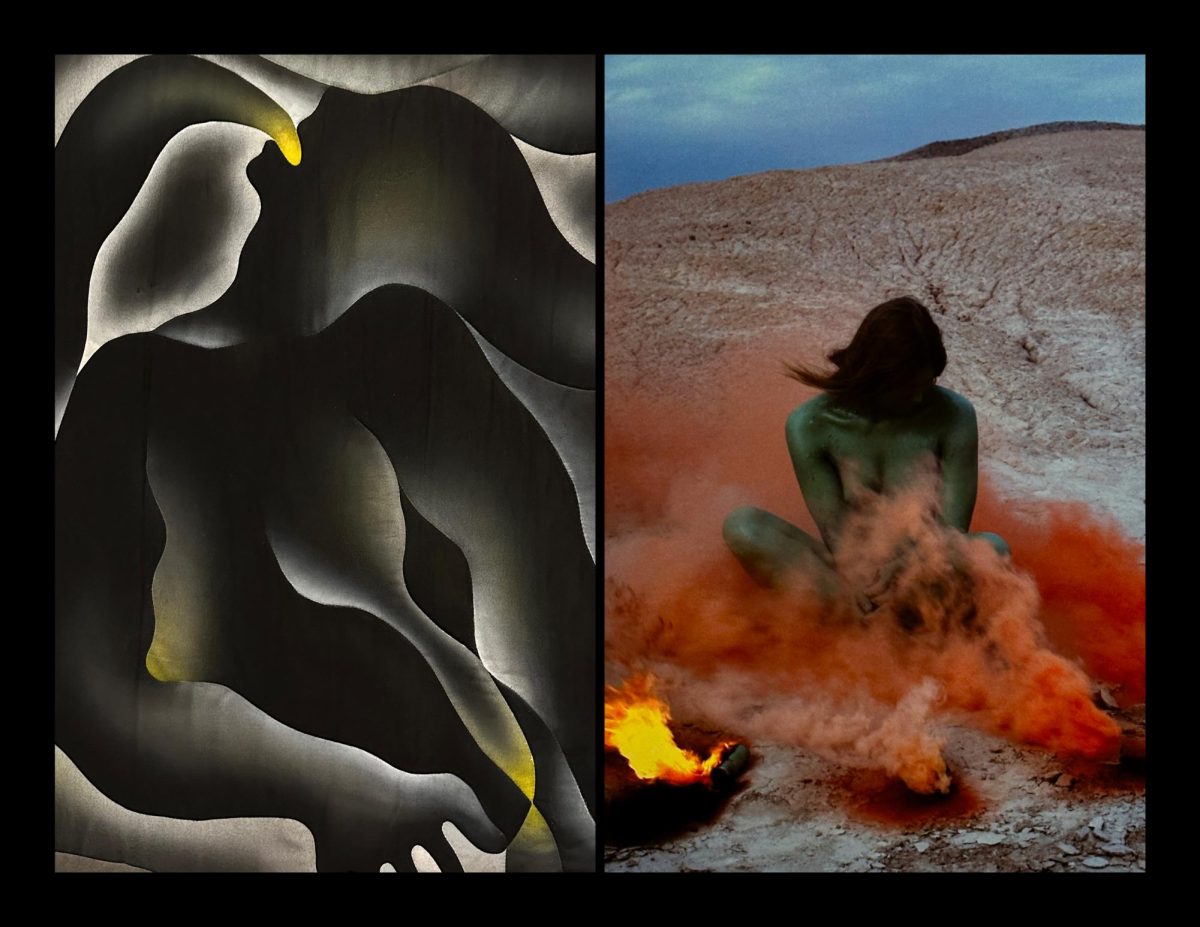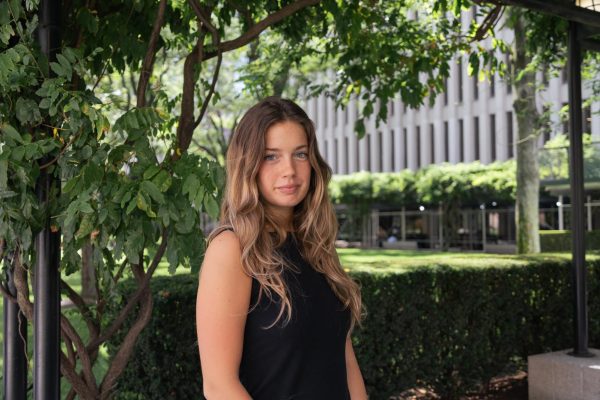Judy Chicago is nothing if not persistent, and her artistic trajectory — both triumphantly heralded and viciously contested by the media — has paralleled a lifetime of resolute activism.
“Judy Chicago: Herstory” is an impressively multifaceted albeit fragmented exhibition at the New Museum in Nolita as well as the first comprehensive New York survey of work — an analysis of an individual’s artistic works — completed by Chicago.
“Herstory” insists upon the breadth and longevity of Chicago’s career, which includes work spanning from the 1960s to the 2010s, and it’s moving that her feminist oeuvre feels as timely today as it did over a half-century ago.
Resistance and liberation from patriarchal structures, both those within and independent of the art world, are perennially relevant, as “Herstory” suggests. Chicago has spent a lifetime translating the most primordial facets of the human experience — chiefly the female experience — including birth, mortality and the social construction of self in all of its complexity into visual terms.
Chicago’s survey of work is underscored by a passionate assertion of womanhood.
The survey of work evidences Chicago’s range and heralds her as an artist with depth beyond her infamous 1974-79 installation, “The Dinner Party.” A gargantuan, triangular dining table topped with 39 table settings, the work represents significant women in global history.
Chicago possesses a unique ability to deftly appropriate eccentric materials, to mold them in unprecedented manners into agents of resistance. She wears many hats: sculptor, feminist, radical and mechanic, to name a few. Upon the completion of her bachelor’s of fine arts and master’s degrees, both from the University of California, Los Angeles, Chicago enrolled in auto-body school in 1964. This instilled in her a fascination with industrial mechanisms and traditionally masculine material, which manifested itself in the “Hoods” series (1964-65).
The exhibition encapsulates the disparate materials represented in her collections into a singular show. “Herstory” is successful in its communication of Chicago’s artistic malleability; rare is the artist whose vision has funneled through such a vast range of materials — from lacquered automotive hoods to ceramics to textiles to needlework — and retained the original essence.
Perhaps it is profound adaptability that has rendered Chicago’s artwork persistently relevant; she’s left no medium unattempted, and oftentimes these efforts are gratifying. Chicago maneuvers conversations on female bodily agency, and the stripping of its agency by the patriarchy, with poignancy and dexterity.
The strengths are evidenced in works such as “Rejection Quintet,” which features renderings of flowering vulvas in graphite and colored pencil accompanied by tender personal statements inscribed in Chicago’s characteristic, looping handwriting. Her personal statements are notes on vulnerability, rejection and resilience and the series functions, in effect, as a visual diary revealing the artist’s most intimate vulnerabilities, which are strikingly familiar to those who share in the female experience. Here, she finds her central theme.
Chicago’s survey of work is underscored by a passionate assertion of womanhood. It’s evidenced in her repeated usage of the vulva motif, in her subversion of domestic gender roles, and, famously, in her celebration of traditionally marginalized female mediums like textile.
Beyond this feminine undercurrent, however, the exhibition lacks continuity. Each gallery functions largely as a self-contained vignette, radically distinct from those that neighbor it in terms of both style and material. This may be intentional or, rather unavoidable, as Chicago’s career in its entirety is uneven because of its vast scope. As a result, the survey functioning as a reflection of Chicago’s career (minus “The Dinner Party”) feels disjointed.
Chicago has spent a lifetime translating the most primordial facets of the human experience — chiefly the female experience.
While an artist’s trajectory does not need to be linear, the transition from one gallery to the next winds up feeling disorienting to the viewer, and its curatorial philosophy is elusive. Such a disparity is most jarring on the second floor of the exhibition, which features multiple unrelated photo series, sculptural installations and paintings with no discernible relationships to one another.
The commentaries on masculinity, reproduction, environmental dangers and domesticity, each project distinct from one another, are testaments to the artist’s boundless creative spirit and technical prowess. When presented in tandem, however, their atmospheres — denied room to breathe — impede one another.
In a different part of the exhibition, on the fourth floor, a collection of loaned works attributed to over 80 female and nonbinary creatives entitled “The City of Ladies” dazzles. These artists include Georgia O’Keefe, Sojourner Truth, Hilma af Klimt and the Italian Baroque luminary Artemisia Gentileschi.
“The City of Ladies” is a remarkable selection of artwork and an unabashed celebration of female identity, sisterhood and artistic production, which positions Chicago’s contemporary work in a tradition of greatness. It is staged below a hanging installation of banners created by Chicago, which pose questions about the ways in which society might function if it was structured around womanhood: What if women ruled the world? Would old women be revered? Would buildings resemble wombs?
Chicago proves herself not only as an artist but as a cultural historian with “The City of Ladies,” a creative whose artistic ideology has been born of a sophisticated understanding of the women whose activism preceded hers.
While Chicago’s “Herstory” is not the only show on exhibition at the New Museum, it is certainly the most comprehensive and perhaps the most timely. As women’s bodies continuously manifest as topics of debate time and time again, viewers look to Chicago’s biomorphic, vaginal forms, brazenly candid prose, and insistence upon the visibility of women’s issues as a beacon of defiance. Chicago’s sweeping bodies of work, unfailingly imbued with an impassioned flavor of resistance and liberation, remain consistently critical to the modern art landscape.


